Posted by Elena del Valle on March 1, 2010

Click on image to enlarge
Photo: Census Bureau
Hoping to count every man, woman and child, including many whose first language is not English, in the country in its decennial tally the Census Bureau will mail out 120 million forms starting in March. The 2010 Census questionnaire will be available in six languages: English, Spanish, Russian, Chinese, Korean and Vietnamese. For the first time, the government entity will mail out 13 million bilingual, English-Spanish forms as part of the census taking effort mandated by the U.S. Constitution.
In an effort to allay the fears and overcome the language barrier for Spanish speakers living in the United States, the Census Bureau recently announced 2010.census.gov/espanol/, a Spanish language section of the census website. According to a spokesperson at the Census Bureau, the organization’s website is in English and Spanish is the only other language. The Spanish language pages are designed to inform “the more than 34 million Spanish-speaking people about the 2010 Census and to demonstrate to the Hispanic community that participation is easy, important and safe,” according to a press release distributed last month.
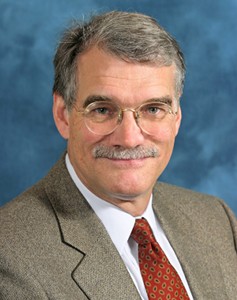
Robert M. Groves, director, Census Bureau
“Every decade, the census has to adjust how it reaches out to a diverse and growing population. These new and interactive Web pages are just such an example of how the Census Bureau is continuing to respond to new challenges,” said Robert M. Groves, director, Census Bureau. “Our hope is that visitors can relate and understand the importance of their participation in the 2010 Census and how they personally can have an impact on the well-being of their communities. Our Spanish language 2010 Census Web site demonstrates the Census Bureau’s commitment to ensuring a fair and accurate count of the Hispanic population. The 2010 Census is easy, important and safe, and we urge everyone to make sure they are counted.”
In addition to the Spanish version of the 2010 website, the Census Bureau plans a one-page description and a user guide explaining how to answer the census questionnaire in 59 languages. While the 2000 Census paid advertising campaign was in 17 languages, the 2010 Census plans to include 28 languages in its advertising campaign.
Posted by Elena del Valle on February 26, 2010
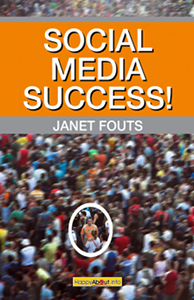
Social Media Success e-book cover
Photos: Janet Fouts
Janet Fouts, an educator, speaker and social media coach at Tatu Digital Media, dedicated time over six months to write her first non fiction e-book, Social Media Success (Happy About, $14.95). Her intention was to answer many questions from clients and blogs and share suggestions on how readers can take advantage of social media for their business needs. The 145-page e-book, also available as a 162-page print book ($19.95), outlines the basics of online social media issues. It includes a Foreword by Aaron Strout, chief marketing officer, Powered Inc.
“I wrote this book to pull together answers to the questions from my clients and on the blogs all in one place. I wanted to write a book that goes beyond telling people how they need to use social media and give them real actionable information they can use in their business,” said Fouts when asked why she wrote the book.
The e-book is divided into 23 chapters that discuss social media concepts, videos, blogging, etiquette, groups, nonprofits, measurement and some of the better known sites such as Twitter, Facebook, Flickr, FriendFeed, and LinkedIn. Some of the chapters such as Flickr, Measurement and Efficiency Matters are short, (one or two pages in length), while others like Set Some Rules have a more conventional length.
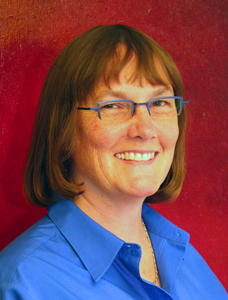
Author Janet Fouts
One of the nuggets of wisdom is in Strout’s words: “… social media is a slow waltz, not a frenetic boogie and it takes time for it to work.” While social media may offer a forum to accomplish amazing things, as Fouts says in the Introduction, it seems that to be successful and reap the benefits of social media outreach users must be diligent and patient. She drives home the point that social media is about developing relationships, having real conversations and establishing trust.
For social beings social media may be an ideal environment to connect with friends, followers and even customers. Through the vast networks of users social media can help an individual, organization or company promote products or services to people the initial user may have never even met. Fouts admiration for the tools is evident when she says: “It can open your eyes to the richness of human relationships and even find you a mate.”
As a senior partner at her company Fouts has worked with the online community for 13 years and with small businesses to develop their online presence. She dedicates some of her time to helping individuals and corporations understand how to use social media tools effectively and conducting in-house workshops and virtual training sessions on social media tools and strategy.

Click here to buy Social Media Success!
Comments:
Filed Under: Books
Posted by Elena del Valle on February 24, 2010

Do race and ethnicity influence attitudes toward clothes? Probably. And, the concept of work clothes changes over time. Suits, for example, are required less frequently for women overall today than they were some years ago. While the suit has fallen out of popularity in general, it seems to have remained a staple in the wardrobe of black women. Black working women are three times more likely than average to have bought a suit in the last year, according to a recent Mintel survey. They are more likely to rely on shoes, boots, belts and jewelry to complete their outfit.
In spite of their conservative dress attitudes regarding suits black women respondents said they are much more likely to take fashion chances; and try out new designers and new brands before they become mainstream. Hispanic working women who responded to the survey said they consider designer labels important. At the same time, it appears from their responses to the survey questions that black, Asian and Hispanic working women are much more likely to visit a retailer in search of brand names.
For some women brand names provide an image boost; for the white women surveyed they represent a comfort zone. Researchers were left with the impression that once these consumers identify a brand they like they tend to return to it. As a result retailers that carry different brands all the time may have difficulty drawing these shoppers.
Hispanic, black, and Asian women said it is much more likely that they are no longer wearing the clothes they wore last year, suggesting that these women shop for work clothes much more often than non-Hispanic white women.
Perhaps because they are young as a group (the Latino population is generally younger than the overall population.) Hispanic women respondents are significantly less likely to say that they look for timeless or conservative looks.
Most survey takers, except white women, said they are much more likely to agree that fashion magazines help them decide which clothes to buy. Since they find high value in designer labels this makes sense. At the same time, white women who participated in the survey said are least likely to say that they are influenced by fashion magazines. This is curious since many or most fashion magazines primarily target a white women.
According to a company representative, fieldwork was conducted online in August 2009 among a sample of 503 working (outside the home) women parents 18 and older with access to the internet. Mintel is an international supplier of consumer, product and media intelligence.
Posted by Elena del Valle on February 23, 2010
Information provided by our Event Partner

Branding to the Trillion Dollar U.S. Latino Market
2010 Hispanic Retail 360 Summit
August 8-10, 2010
Hyatt Regency Scottsdale Resort and Spa at Gainey Ranch
The Hispanic Retail 360 Summit, now in its sixth year, is the retail industry’s premier event for retailers and marketers looking to grow their business with the Latino consumer market in the U.S. It is a high-level Conference & Tabletop Exhibition including an informative conference program and opportunities for face-to-face interaction between retailers, suppliers and experts in Latino marketing.
The conference provides retailers and suppliers a complete 360 degree look at the Hispanic shopper, using data from The Nielsen Company, retailer case studies, and noted experts on demographics, buying behavior, segmentation, marketing, merchandising, product sourcing, store design and in-store marketing to Latino consumers.
Special rate of $599 will be honored for HispanicMPR subscribers.
Go to www.hispanicretail360.com to register and use the code HISMPR to receive this special rate.
For more information on registering or sponsorship opportunities contact Michael Hatherill at 646-654-7501 or MHatherill@csnews.com.
Posted by Elena del Valle on February 22, 2010
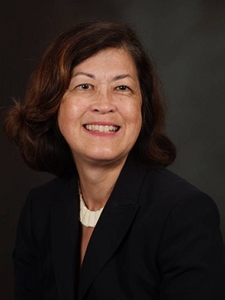
Edna Chun, Ph.D., vice president, Broward College
Photo: Edna Chun, Ph.D.
A podcast interview with Edna Chun, Ph.D., vice president, Broward College is available in the Podcast Section of Hispanic Marketing & Public Relations, HispanicMPR.com. During the podcast, Edna discusses bridging the diversity divide based on a book she co-authored by the same title with Elena del Valle, host of the HispanicMPR.com podcast.
In her job at Broward College, a large urban community college with four campuses and 60,000 students in Fort Lauderdale, Florida Edna oversees recruitment, professional development, staffing, diversity and affirmative action, employee and labor relations, compensation, records management, and benefits administration for the college. She has over two decades of human resource experience in public research universities in the California, Oregon, and Ohio state university systems. She holds a Doctor of Music degree from the Indiana University School of Music.
Edna is co-author, with Alvin Evans, of Bridging the Diversity Divide: Globalization and Reciprocal Empowerment in Higher Education (see University human resources administrators address diversity) (Jossey-Bass) published in 2009. They also co-authored Are the Walls Really Down? Behavioral and Organizational Barriers to Faculty and Staff Diversity published as part of the Association for the Study of Higher Education (ASHE) Higher Education Series (Jossey-Bass) two years earlier. The book discusses subtle and covert discrimination in the higher education workplace and provides a systematic institutional approach to diversity and inclusion. It received the Frances G. Hansen Publication Award by the College and University Professional Association for its contribution to the human resource profession at the organization’s 2007 national conference in Baltimore, Maryland.
Edna is co-author of articles on talent management, human resource strategies, and diversity published in Hispanic Outlook, Insight into Diversity, and Diverse. She was recently unanimously elected to serve on the editorial board of the Association for the Study of Higher Education. She is a regular contributor and member of the editorial board of Insight into Diversity magazine.
To listen to the interview, scroll down until you see “Podcast” on the right hand side, then select “HMPR Edna Chun, Ph.D.,” click on the play button below or download the MP3 file to your iPod or MP3 player to listen on the go, in your car or at home. To download it, click on the arrow of the recording you wish to copy and save it to disk. The podcast will remain listed in the February 2010 section of the podcast archive.

Click here to buy Bridging the Diversity Divide
Posted by Elena del Valle on February 19, 2010

Diabetes? No Problema The Latino’s Guide to Living Well with Diabetes
Photos: Sheri R. Colberg, Leonel Villa-Caballero
The average newborn today has a 30 percent chance of becoming diabetic. A Hispanic newborn has nearly a 50 percent chance of developing diabetes. With these daunting statistics how are families able to deal with diabetes and maintain a good quality of life? Doctors and specialists believe it’s possible for diabetics to overcome the odds and live a healthy and happy life.
Sheri R. Colberg, Ph.D. and Leonel Villa-Caballero, M.D., Ph.D. share the benefits of years of experience and studies in a book published in 2009 targeting Latinos, in English, on the oft discussed topic of diabetes. In Diabetes? No Problema The Latino’s Guide to Living Well with Diabetes (Da Capo Press, $15.95), a 270-page softcover book they explore the medical condition as it relates to Latinos in the United States.
Among the 24 million people with diabetes in 2007 (one quarter of which were unaware of their condition), they believe Latinos are subject to special barriers including cultural issues relating to food consumption that can and have been overcome by many people. How? Lifestyle choices regarding diet, exercise and body weight have been known to delay or prevent diabetes in two of three Hispanics.
In the 10-chapter book these two experts discuss the myths and realities of insulin, how dietary precautions can help lower sugar blood levels, ways to minimize stress, avoiding pitfalls, and how patients can exercise safely and effectively to conquer the threats diabetes brings.
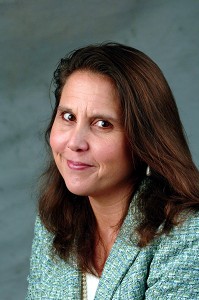
Sheri R. Colberg, Ph.D.
Colberg, an exercise physiologist and professor of exercise science at Old Dominion University in Virginia, is a diabetes sufferer herself. She has worked as an exercise specialist at a diabetes treatment center and authored seven other books including The Diabetic Athlete, Diabetes-Free Kids, and The 7 Step Diabetes Fitness Plan.

Leonel Villa-Caballero, M.D., Ph.D
Villa-Caballero, a researcher in the Family and Preventive Medicine Department at the University of California-San Diego, has more than 17 years of experience treating patients with diabetes. The Mexico City-born physician was awarded the American Diabetes Association Cielo Award for his efforts toward improving the health of Latinos.

Click here to buy Diabetes? No Problema!
Diabetic Athlete’s Handbook
The 7 Step Diabetes Fitness Plan
Comments:
Filed Under: Books
Posted by Elena del Valle on February 17, 2010

Photos: Hulu, YouTube, Tremor Media
Americans’ thirst for online videos seems unquenchable (also see Americans are viewing online videos in record numbers). Last December, 178 million Americans watched 33.2 billion videos online, and Google was by far the main player in that space, according to information released earlier this month by the comScore Video Metrix service. ComScore is a Virginia based company specializing in digital media usage measurement. Most people connected to the Internet, 86.5 percent, watched videos with an average duration of four minutes.
Google sites visitors watched 13.2 billion videos and YouTube.com accounted for almost 99 percent of all videos viewed there. For the first time Hulu (NBC Universal, News Corporation and The Walt Disney Company share in the ownership stake of the company and are content providers) surpassed one billion monthly video streams or 3 percent of the market. Other significant players in the online video space included Microsoft sites, in third place, with 561 million or 1.7 percent; Fox Interactive Media with 551 million also 1.7 percent and Yahoo! sites with 539 million or 1.6 percent.
Each viewer watched an average of 187 videos in December. Some 136 million unique viewers visited Google sites watching 97.5 videos each during the month; 59.8 million Yahoo! sites fans viewed 9 videos each; and 56.8 million visitors on Fox Interactive Media watched 9.7 videos per viewer. Hulu viewers watched 22.9 videos each during the month, another record for the website.

Click on image to enlarge
What about ad reach? With a potential reach of 103.7 million viewers, 58.3 percent of the total audience, Tremor Media and BBE with a potential reach of 101.1 million viewers, 56.9 percent penetration, were the top video ad networks. The Advertising.com Video Network with 83.6 million viewers, 47 percent, was in third place.

Jason Glickman, chief executive officer, Tremor Media
“With our Acudeo technology tightly integrated within the player-environment across all of the sites in our in-stream network, Tremor Media is able to continually introduce new and innovative ad formats that can be reliably delivered at scale. These new formats benefit the entire video value chain – from advertisers to publishers to the end consumer – by putting the viewer in control, enhancing engagement, and making video advertising more effective for brands,” said Jason Glickman, chief executive officer, Tremor Media in a press release.
Things must be going well in the online video ad business. Tremor announced six new ad formats last month: Pre-Roll Plus Overlay, a clickable overlay that appears over the publisher’s content following a standard pre-roll; vChoice Select, allows the user to choose which video ad to watch before it’s delivered; vChoice Rotator, rotates multiple brand videos in a single unit, allowing advertisers with multiple video assets to offer fewer options as thumbnails within the vChoice menu, and rotate the options each time an impression is served to the same user; Data Feed, dynamically populates brand or location specific data within the ad unit automatically or via user input such as a zip code; Sequencer, offers a different creative for every sequential impression delivered; and In-Stream Live, a live video feed within the ad.
”Requests for Hispanic targeted campaigns tend to be geo-targeted to TX and CA,” said Shane Steele, vice president, Marketing, Tremor Media when asked about Hispanics and online video ads.
Very little information seemed to be available about online video ads targeting or viewed by Hispanics. No ethnic breakdown was included in the comScore data and none of the three ad leaders mentioned Latino ad campaigns specifically in their promotional materials online.
“Moving Beyond Traditional Media Measurement: measuring conversations and social media” audio recording

Presenter Katie Delahaye Paine, founder, KDPaine & Partners
Find out about
- Issues affecting online public relationships today
- Testing relationships as part of a survey
- Measuring ethnic group relationships
- Measuring foreign language communications in a similar ways to English
- Biggest challenges measuring conversations and social media
- Measuring online relationships with little or no money
Click here for information on “Moving Beyond Traditional Media Measurement”
Posted by Elena del Valle on February 16, 2010
Since 1973, National Ag Day is celebrated on the first day of Spring to provide recognition of the food and fiber industry’s contributions to America, the food many of us eat every day. The National Agri-Marketing Association (NAMA) and the American National CattleWomen (ANCW) planned the first National Agriculture Day nearly 30 years ago. Beginning in 1979, The Agriculture Council of America (ACA) has coordinated the National Agriculture Day celebration in Washington, D.C.
The idea is to unite the food and agricultural communities and educate the non-farm public about the industry which is mostly, 98 percent, family owned, according to the AdDay Blog. For a glimpse of the new animated Public Service Announcement see our Public Service Section on the right side of the page. Click on the ad to visit the AgDay.org website for event information. Nonprofit organizations are eligible for free public service announcement ad space on HispanicMPR.
Posted by Elena del Valle on February 15, 2010

Fernando del Rincón, host, Mega News Nocturno
Photo: MegaTV
The nightly news on WSBS Mega TV has become popular among Spanish speaking men 25 to 54 years old in the Miami-Ft. Lauderdale area. According to a January 19, 2010 Nielsen Hispanic Station Index ranking, some 15,000 people watch Mega News Nocturno which airs Monday to Friday nights; making it the second most popular news program in Spanish in that metropolitan area between 10:30 p.m. and 11 p.m. after WAMI, the TeleFutura Network-owned station.
Mexico born and raised Fernando del Rincón anchors the 30-minute news program launched October 27, 2009, and a staff of 10 make the show, which focuses on international news analysis. Station representatives boast that it is the only and first interactive newscast using an internet platform, social networks and Skype.
Prior to joining Miami-based Mega TV, del Rincón was the host of Primer Impacto, an investigative news program, and Ver Para Creer, a Believe It or Not type of program, on Univision. According to a station biography, del Rincón started his communications, television and radio career when he was 16. In Mexico, he worked with Televisa Monterrey, a local newscast, and Reforma, a political magazine.
The Nielsen Hispanic Station Index (NHSI) estimates local viewing information for Spanish-language television stations in 16 large Hispanic markets. Spanish Broadcasting System, Inc., one of the largest publicly traded Hispanic-controlled media and entertainment companies in the United States, owns and operates 21 radio stations in Hispanic markets; it also owns and operates Mega TV in Miami, a television operation with over-the-air, cable and satellite distribution and affiliates in the U.S. and Puerto Rico.
“Moving Beyond Traditional Media Measurement: measuring conversations and social media” audio recording

Presenter Katie Delahaye Paine, founder, KDPaine & Partners
Find out about
- Issues affecting online public relationships today
- Testing relationships as part of a survey
- Measuring ethnic group relationships
- Measuring foreign language communications in a similar ways to English
- Biggest challenges measuring conversations and social media
- Measuring online relationships with little or no money
Click here for information on “Moving Beyond Traditional Media Measurement”
Comments:
Filed Under: Media



























